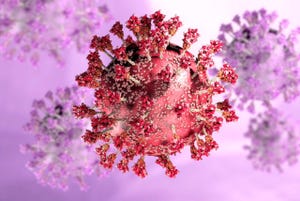TÜV Rheinland, GreenSoft Enter into Partnership Agreement
With stricter materials regulations looming in the European Union, device makers will be preparing to meet deadlines for compliance. The partnership positions TÜV Rheinland and GreenSoft to provide services to these companies.
August 16, 2011

TÜV Rheinland (Newtown, CT) has entered into a partnership with GreenSoft Technology Inc. (South Pasadena, CA) that will give the product testing and certification company access to GreenSoft’s data collection service. With stricter materials regulations looming in the European Union, device makers will be preparing to meet deadlines for compliance. The agreement positions TÜV Rheinland and GreenSoft to provide services to these companies.
Beginning June 2014, medical device makers will no longer be exempt from the EU’s restriction of hazardous substances (RoHS) regulation. Companies have until then to ensure that their products comply completely, all the way down to the tiniest component. They will also have to comply with the registration, evaluation, authorization, and restriction of chemicals (REACH) regulations. This will require them to document and disclose the use of any so-called substances of very high concern (SVHC).
|
GreenSoft and TÜV Rheinland can help device makers be sure their products comply with changing environmental regulations in the EU. Photo courtesy of TÜV Rheinland. |
While readying for those requirements may seem relatively simple at first glance, it can be a tricky and time-consuming process, according to Steve Schonebaum, sales and marketing director for GreenSoft. Products can have components, assemblies, and subassemblies, all of which can be provided or manufactured by different suppliers. To further complicate matters, the REACH SVHC list is frequently revised.
“So if you don’t have full material declaration for almost every component in a product, you’ve got to recollect a whole bunch of certificates to demonstrate due diligence,” Schonebaum says. “There are a lot of variables.”
RoHS will be complicated for medical device makers, says Geoffrey Bock, because many of them have products on the market that are not currently compliant but which will have to be by the deadline. Bock is business development manager of green initiatives at TÜV Rheinland.
“It was not a major emphasis for these companies, because they were exempt,” Bock says. “Typically, most companies wait to the last minute until they have to do something, because of all the headaches of going through compliance: What it means to change a power supply, what it means to change a circuit breaker, what it means to change an LED screen that’s embedded within your product. Everything has to be redone.”
Device makers in Europe, Schonebaum adds, “are ahead of the game.”
“We’re familiar with situations at a lot of large OEMs [in the United States], and they’ve got a lot of work to do to catch up,” Schonebaum says.
Because many of these companies haven’t considered documenting compliance with RoHS before, they likely don’t have personnel in place to do that, Bock says. And that leaves those companies with a choice: retrain current employees, hire new employees, or outsource the job.
“You might have to hire two people to get this done, because it’s got to be done by 2014,” Bock says. “The impact of hiring people, of course, these days, depending on how healthy an organization is, could be twice as expensive as going through the outsourcing process of collecting the data or having it tested by a third party.”
Schonebaum agrees that outsourcing can be more cost-effective. Environmental regulations frequently change, but not often enough that extra hires will have something to do year-round. Documenting compliance is “not constant work,” he says, especially considering the REACH SVHC list.
“It’s cyclical, it’s episodic,” he says. “It happens occasionally. All of a sudden, there’s a new REACH SVHC list. Well, you’ve got to devote a person to that full-time for a little while. Then what do you do? Just managing the information for all of those components is very complex.”
Schonebaum says that he’s seen many telecommunications companies, which have long been required to comply with RoHS, decide to outsource the documentation of their products and components.
“This is a big, complicated issue,” Schonebaum says. “Many of our customers just have decided it’s not worth building a group to devote time and energy to it. It’s much easier just to outsource it. That’s what we have seen, and we expect the same in medical.”
The agreement is designed, Schonebaum says, to serve medical device makers who want to ensure their products meet RoHS regulations and also get their products tested and certified.
Schonebaum says that after establishing an informal working relationship several years ago, it made sense for TÜV Rheinland and GreenSoft to come together formally. “It’s just a nice fit,” he says.
About the Author(s)
You May Also Like



